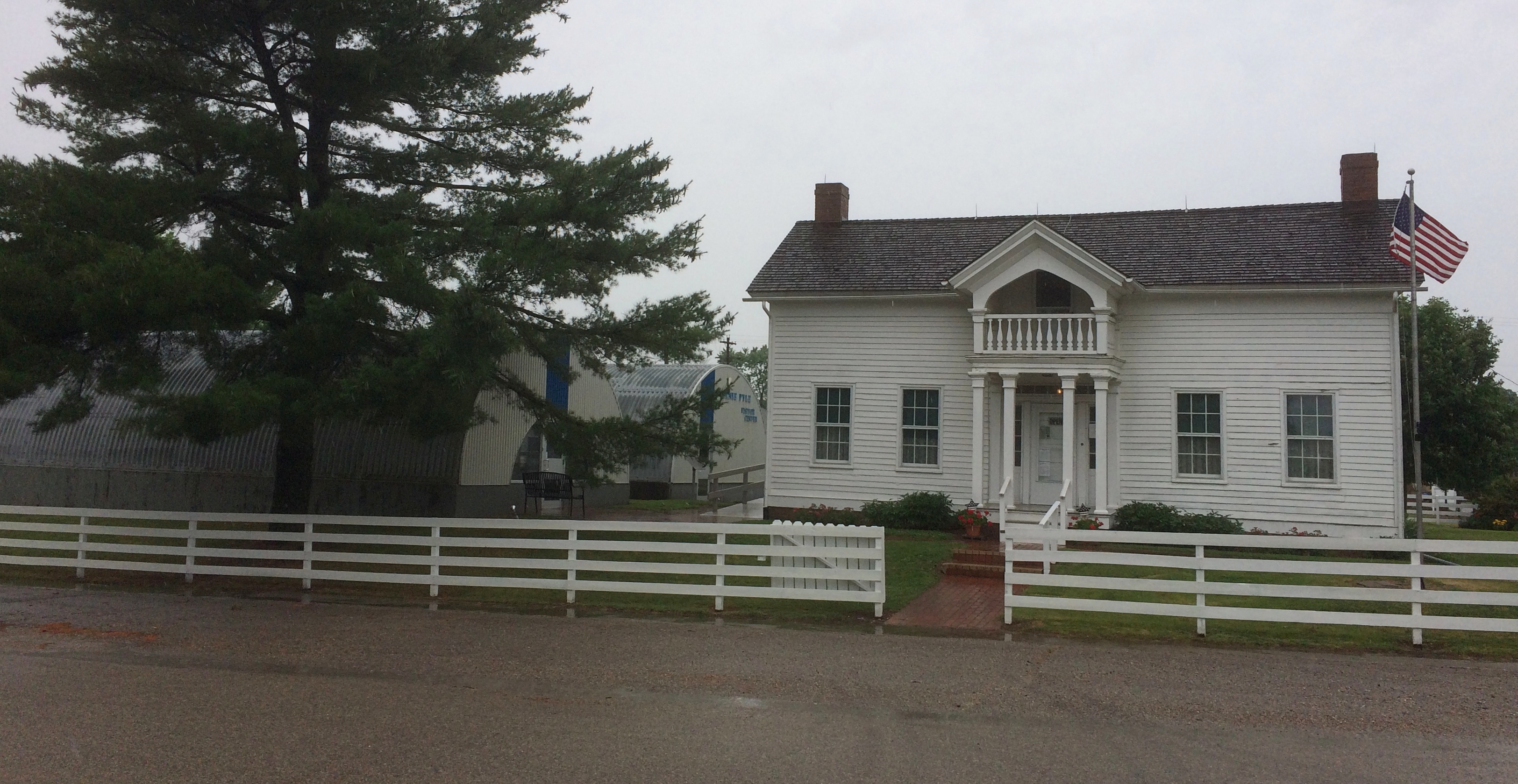I have a sneaking suspicion that the later 21st century is going to be completely indifferent to war correspondent Ernie Pyle. Like almost everyone else, he’ll join the ranks of the obscure. The items now collected at the Ernie Pyle World War II Museum in rural Indiana will scatter to archives or private collections or landfills. Only occasionally will anyone read his writings, as found in libraries or odd corners of the Internet.
The process is already underway. The museum used to be the Ernie Pyle State Historic Site, owned and run by the state of Indiana. When the recession came 10 years ago, state budgets suffered. I doubt that anyone put it down officially in a memo or the like, but I’m sure the decision to close the Ernie Pyle SHS came down to, “Who’s heard of him anyway?”
A nonprofit, the Friends of Ernie Pyle, now owns the site and carries on the struggle against obscurity. The organization renamed the museum nearly a decade ago. Yet Randy McNally, in its 2017 Road Atlas, still calls it a state historic site. So does Google Maps. It isn’t a place that gets a lot of attention.
We arrived in the hamlet of Dana, Indiana, early in the afternoon on Saturday. Rain had dogged us most of the way from Champaign, Illinois, where we’d spent the previous night. The museum includes the house in which Ernie Pyle was born in 1900, relocated from the nearby farm fields.
Next to the birth house are two Quonset huts, World War II vintage but never used for military purposes, that house displays and Ernie Pyle artifacts. It continued to rain while we were in the huts, with drops drumming on the metal in their distinctive way the whole time.
I probably would have heard about Ernie Pyle later anyway, but I like to think that the reason we came was that Bill Swinny, one of my high school English teachers, planted the seed by telling us about him during class one day. Mr. Swinny, who taught us a good deal more than high school-level literature, managed to convey how upset the nation was at the death of Ernie Pyle, coming as it did right after the death of President Roosevelt.
We were the only visitors at the museum. An informative woman in her 60s took our admission. Also on staff was a much quieter young man, perhaps as young as 20 and perhaps a relative of the older woman, who was doing his bit to help out, though that’s just a guess on my part.
The larger displays, including Pyle-like mannequins standing in for him, evoke Ernie Pyle’s wartime circumstances. That is, living with the GIs he wrote about.
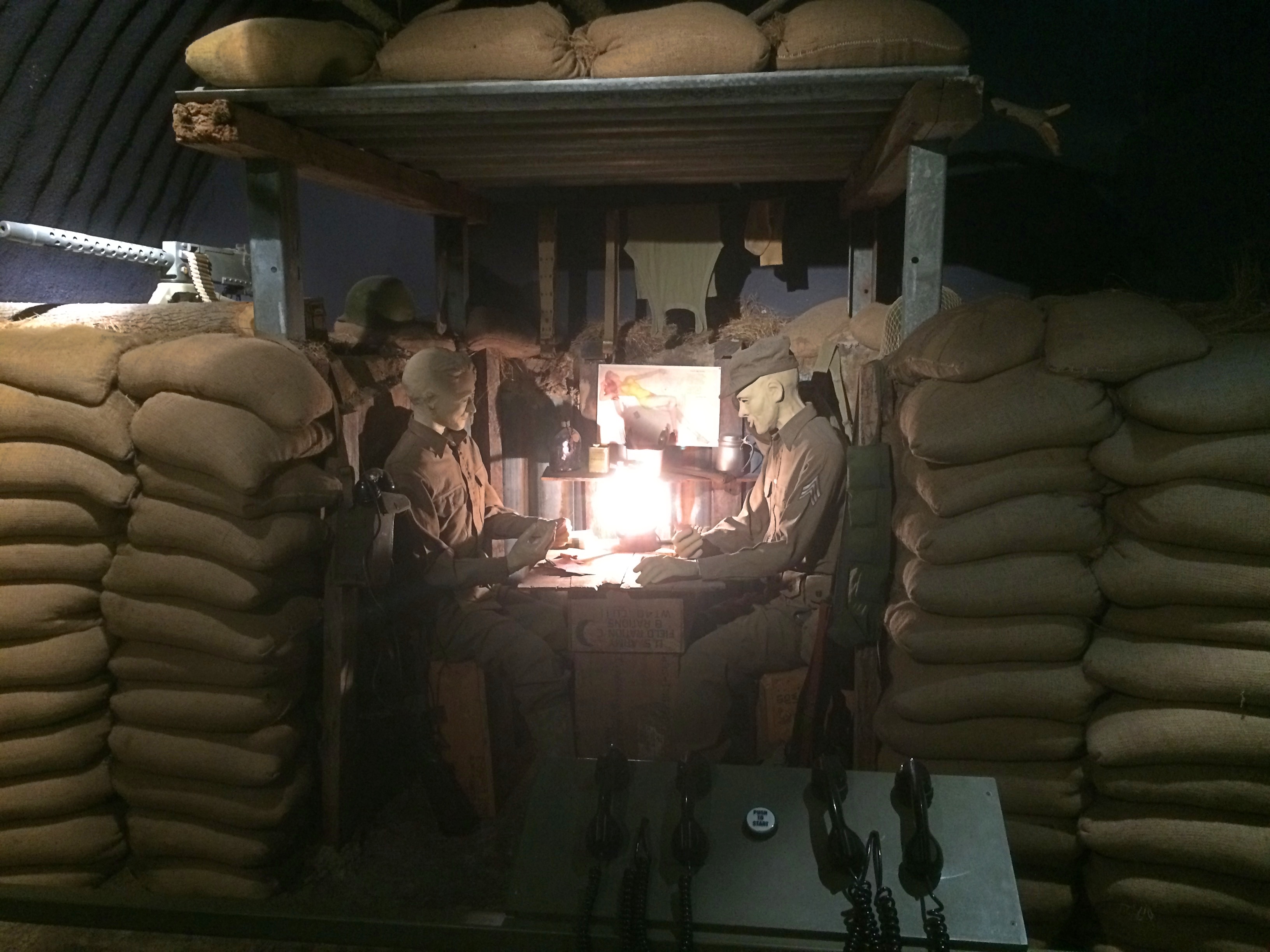
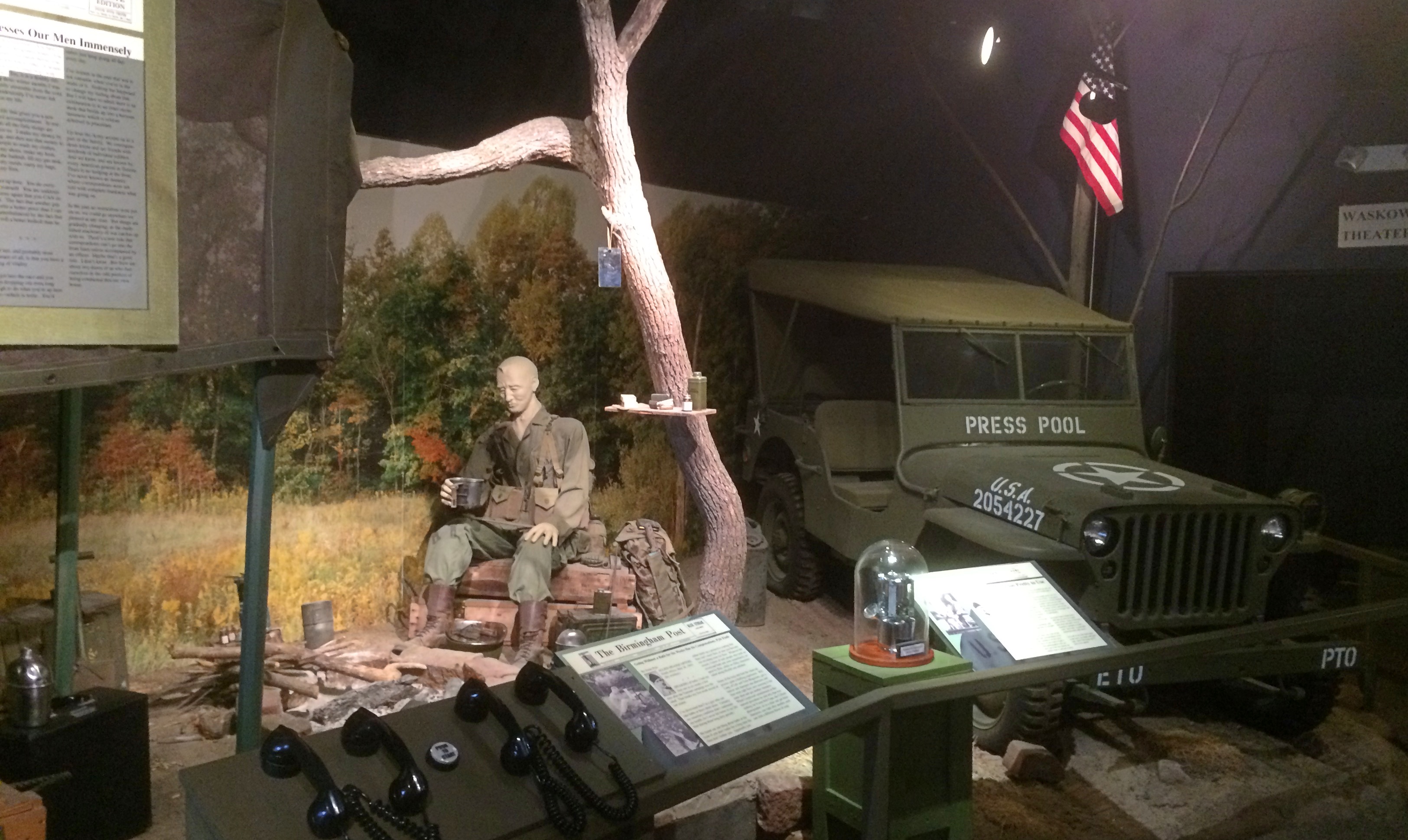 A good number of his columns are posted for visitors to read. You can also listen to excerpts from the columns by picking up telephone receivers. There are a few videos. One is devoted to a single early 1944 column, “The Death of Captain Waskow.” As well it should be, since the column is a masterpiece of reportage.
A good number of his columns are posted for visitors to read. You can also listen to excerpts from the columns by picking up telephone receivers. There are a few videos. One is devoted to a single early 1944 column, “The Death of Captain Waskow.” As well it should be, since the column is a masterpiece of reportage.
Good to know that Ernie Pyle got a Purple Heart, by act of Congress in 1983. A rare honor for a civilian.
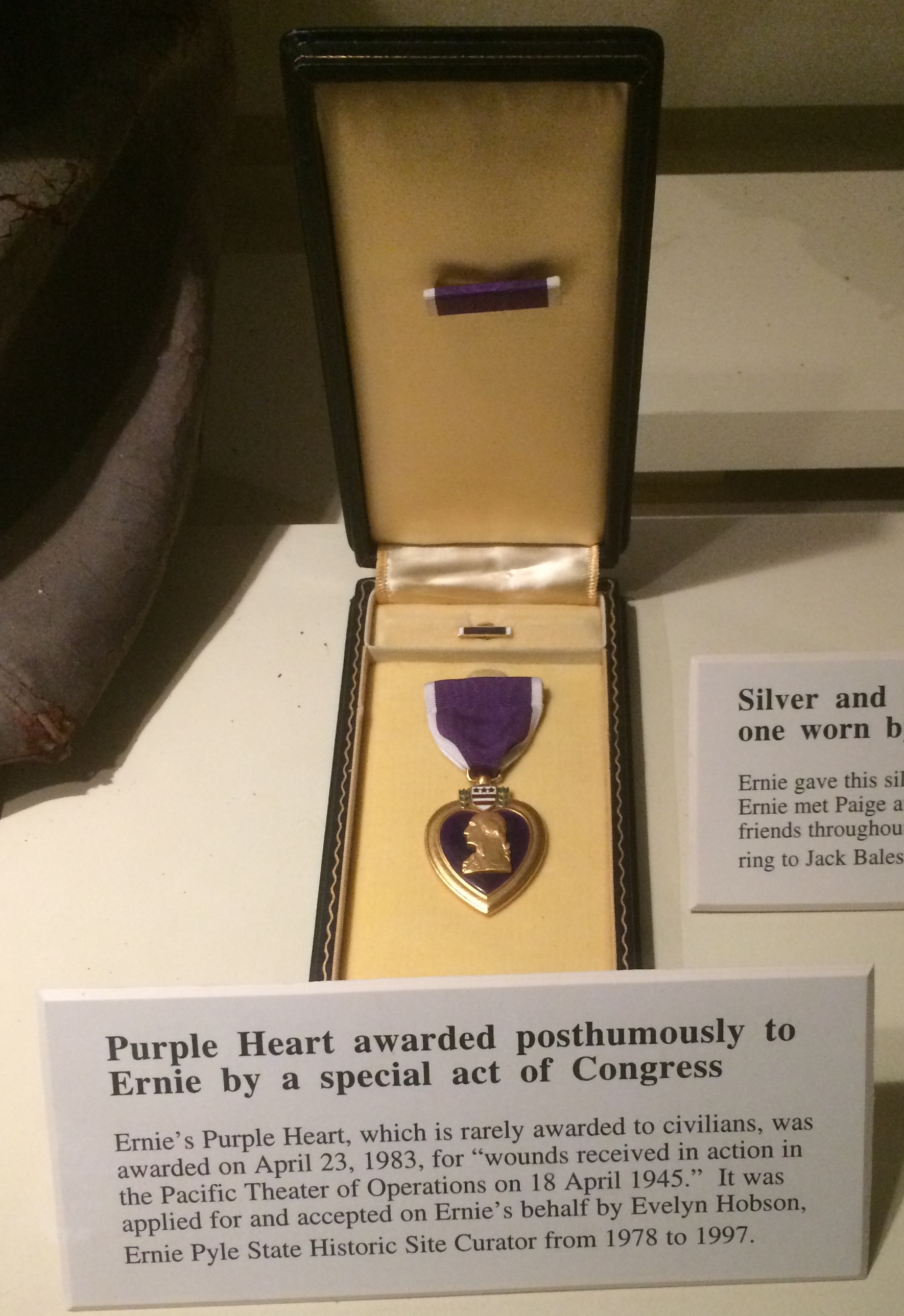 The birth house was interesting, though less compelling. But I did learn that Ernest Taylor Pyle was born poor. At the time of his birth, his parents were tenant farmers.
The birth house was interesting, though less compelling. But I did learn that Ernest Taylor Pyle was born poor. At the time of his birth, his parents were tenant farmers.
The museum isn’t quite all there is when it comes to commemorating Ernie Pyle in that part of Indiana. A few miles to the east of Dana, on U.S. 36, is the Ernie Pyle Rest Park, essentially a wayside rest stop. One feature stands out, and got me to stop despite the rain.
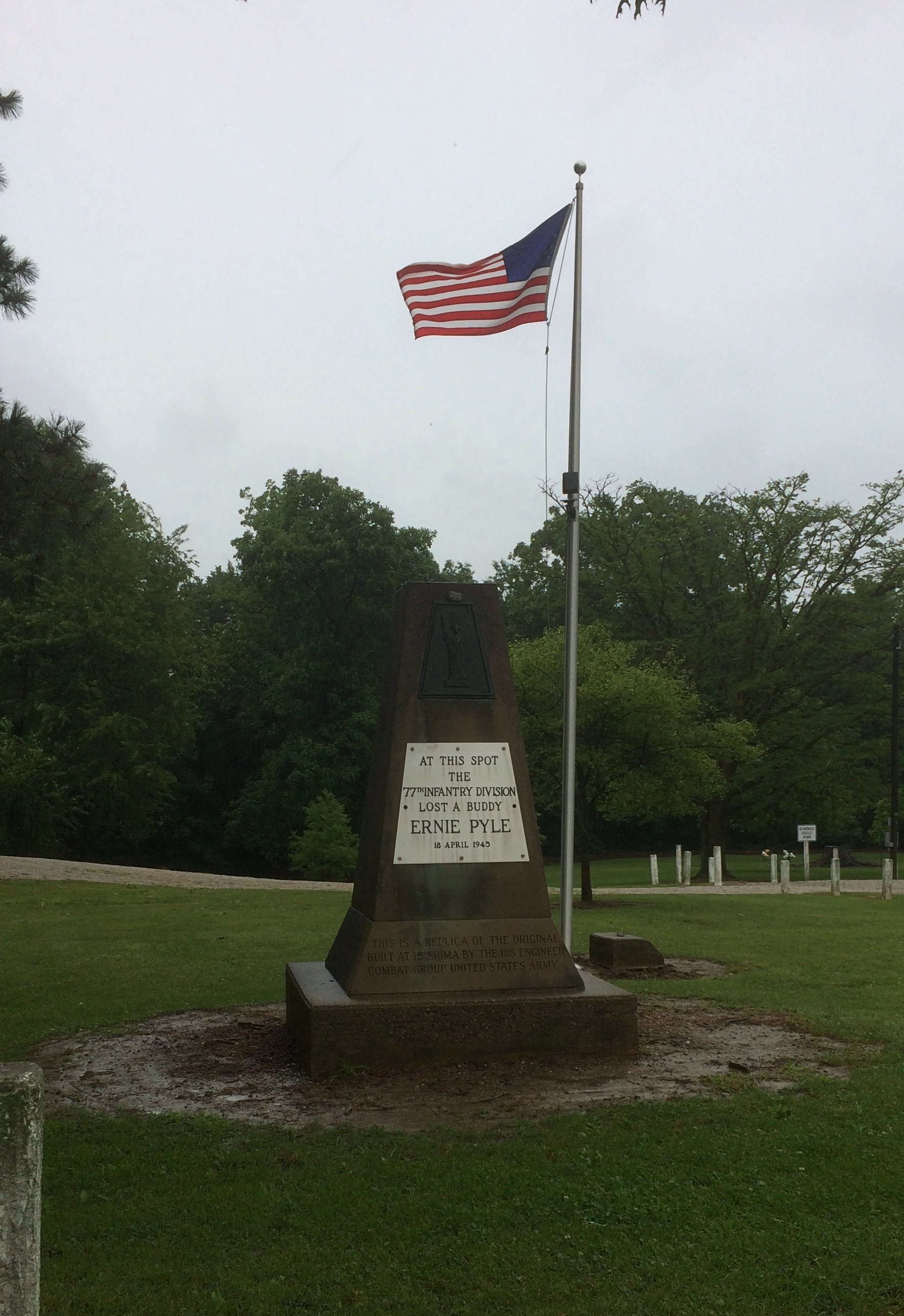 It’s a replica of Ernie Pyle’s memorial on Ie Shima, the small island on which he was killed by enemy fire.
It’s a replica of Ernie Pyle’s memorial on Ie Shima, the small island on which he was killed by enemy fire.
At This Spot
The
77th Infantry Division
Lost A Buddy
Ernie Pyle
18 April 1945
This is a replica of the original built at Ie Shima by the 111S Engineer Combat Group United States Army.
I can’t speak for Ernie Pyle, but I imagine that the thought of being forgotten by future generations might not have troubled him. I get the sense that he would have preferred that the men he wrote about be remembered instead.
